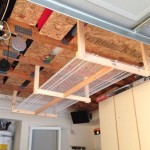How To Build A Garage Door Screen
A garage door screen can transform a garage into a versatile, bug-free space for various activities, from workshops to entertainment areas. Building one can be a rewarding DIY project, offering a cost-effective solution for increased functionality and comfort.
Planning and Preparation
Careful planning is crucial for a successful screen installation. Begin by accurately measuring the garage door opening. Note the width, height, and any potential obstructions like lighting fixtures or door hardware. These measurements will determine the required screen size and frame dimensions.
Selecting appropriate materials is the next step. Common framing materials include wood, aluminum, and PVC. Consider the climate and desired aesthetic when making this choice. Wood offers a classic look but requires regular maintenance. Aluminum and PVC are more durable and weather-resistant, requiring less upkeep. For the screen itself, fiberglass and aluminum mesh are popular options. Fiberglass is more affordable, while aluminum offers greater durability and resistance to pet damage.
Once materials are chosen, gather necessary tools. These typically include a measuring tape, saw (suitable for the chosen frame material), drill, screwdriver, level, staples or screws, and safety glasses.
Constructing the Frame
The frame provides the structural support for the screen. Cut the chosen frame material according to the measured dimensions of the garage door opening. Ensure precise cuts for a snug fit. Assemble the frame pieces, forming a rectangular border. Use screws or brackets to join the corners securely, reinforcing them for added stability.
For larger garage doors, consider adding a center support beam to prevent sagging. This beam should be attached securely to the top and bottom horizontal frame pieces. If using wood, apply a weather-resistant sealant or paint to protect the frame from the elements.
Attaching the Screen
With the frame complete, carefully lay the screen material over it. Ensure the screen is taut and evenly distributed across the frame. Starting at one edge, use staples or screws to secure the screen to the frame. Work your way around the perimeter, pulling the screen taut as you go to prevent wrinkles or sagging.
Trim any excess screen material using a utility knife. For added reinforcement, consider adding a spline—a flexible plastic cord—into a groove around the frame's perimeter to further secure the screen. This step, while optional, can significantly enhance the screen's durability.
Installation and Finishing Touches
The method of installation depends on the garage door's design. Some screens are designed to attach directly to the door tracks, while others use a hook-and-loop system or other specialized hardware. Follow the manufacturer's instructions for the chosen screen system. Ensure the screen is aligned correctly and operates smoothly.
Consider adding features like zippers or magnets for easy access in and out of the garage. Zippers can be sewn directly into the screen material, creating convenient entry and exit points. Magnetic closures offer a hands-free option for quick passage.
Maintenance and Care
Regular maintenance will prolong the life of the garage door screen. Periodically inspect the screen for tears or damage, patching any holes promptly. Clean the screen with mild soap and water to remove dirt and debris. For wooden frames, reapply sealant or paint as needed to maintain weather resistance. Proper care will ensure the screen continues to provide enjoyment and functionality for years to come.
Types of Garage Door Screens
Various types of garage door screens cater to different needs and budgets. Retractable screens offer convenient storage, disappearing when not in use. Roll-up screens operate similarly to window shades, offering a sleek and compact solution. Fixed screens are a more permanent option, providing constant coverage. Consider the frequency of use and desired aesthetic when choosing a screen type.
Choosing the Right Screen Material
Selecting the right screen material is crucial for performance and longevity. Standard fiberglass mesh is an economical choice, offering adequate insect protection. Pet-resistant screens feature stronger mesh, capable of withstanding scratches and tears from pets. Solar screens block a significant portion of sunlight, reducing heat buildup in the garage. Consider the specific needs and priorities when choosing the screen material.

Amazing Diy Garage Screen Doors Quick Release Hinged No Sewing Required

How To Build A Garage Door Screen For Under 100 Dollars

How To Build A Diy Garage Door Screen In 6 Simple Steps Angi

Make Your Own Garage Door Screen Diy Tutorials Thrift Diving

24 Awesome Diy Screen Door Ideas To Build New Or Upcycle The Old

How To Make A Custom Screen Door

Check Out My New Garage Screen So Awesome Shanty 2 Chic
Make A Custom Garage Screen Door Noelle O Designs

Screened In Garage

Diy Garage Door Screen 16th Year
Related Posts








